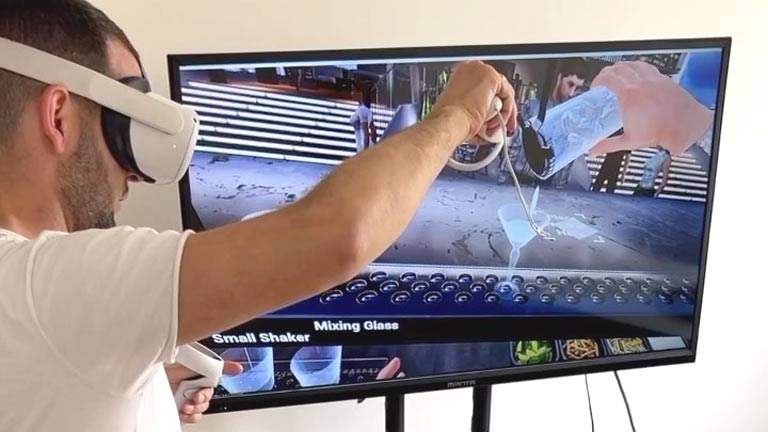
Safety training provides workers with the knowledge and skills to perform their duties safely and effectively. By informing employees about the hazards and risks associated with work activities, workplace incidents can be more safely identified, reported, and addressed.
However, did you know that virtual reality (VR) can be used to present safety training in a way that is engaging, cost-effective, and more likely to increase retention? So, let us discover 3 unique advantages of using VR to provide workers with safety training.
Highly Customisable
One of the most important benefits of VR experiences is that they can be easily tailored for a specific purpose. Put simply, VR technology is typically built using an engine that provides VR developers with a basic framework for creating a VR experience that can be shaped to suit almost any type of project. Correspondingly, by creating templates of different environments, objects, and characters, VR developers can create bespoke scenarios that can be matched to the industry that the workers of a company operate in.
Moreover, this means that training programs can be customised to reflect real-life situations. Generic training programs can be significant use of time and money and often deal with a large amount of unnecessary training content. Using VR safety training enables program leaders to avoid any irrelevant topics so that only the most important safety considerations are covered. If you would like more information about customisable safety training, 360 Immersive provide VR training and you can find plenty of useful resources on their website.
Risk-Free
Essentially, virtual reality safety training experiences are one of the safest ways to educate employees about dangers in the workplace. Creating real-world scenarios to test individuals can be incredibly risky, especially in construction or laboratory environments for example. Comparatively, highly realistic situations can be fabricated using VR that involves no actual dangers. For example, through using 3D environments for risk assessment training, employees can be presented with scenarios and asked to identify any risks while also being prompted to suggest appropriate action that could be taken to nullify these dangers.
Simulated situations like this make employees more aware of the different types of risks that exist and can help workers to develop strategies to counter these risks. While presenting risks in this way is much safer than confronting employees with real risks, using VR training is still an immersive and engaging way to get messages across. Moreover, it is interesting to note that VR safety training is exceptionally portable. Employees do not have to visit specific locations to receive their training and this can save both time and money for a business.
Better Retention Rates
Implementing safety training with virtual reality elements has been shown to lead to better retention rates in most industries. It is undeniable that retention is the key to safety training as failure to retain important information about relevant health and safety practices can understandably endanger employees and members of the public. By the same token, it is thought that providing workers with engaging VR training leads to better retention rates when compared to traditional methods of safety education.
Very few people have the ability to remember something that they have only been told about once. Consequently, in order to ensure that workers retain safety lessons, several different tactics must be used. Accordingly, VR safety training is widely believed to be a visually stimulating and highly interactive strategy for presenting training materials to employees. Additionally, the potential for VR training to impart lessons on just about any topic is what makes it a popular choice in industries where safety is paramount.
Ultimately, it is no secret that companies in a wide variety of different industries are using virtual reality technology for health and safety training. Above all, thanks to its high retention rates and cost-effective nature, it is expected that even more companies will start to use VR experiences to train their employees in the future.
Want to learn more about some of the different uses for VR technology? If so, take a look at these popular types of virtual reality headsets.




